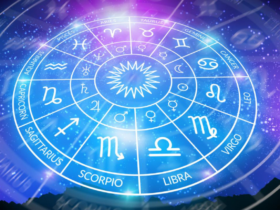Vedic astrology, an ancient and powerful astrological system originating in India, offers comprehensive and predictive readings using the Sidereal System for transits and other techniques. While similar to Western astrology, Vedic astrology utilizes the Sidereal system and incorporates Nakshatras, or Lunar Mansions, adding depth and complexity to its readings.
Among the insights Vedic astrology can provide, discovering the rising sign of a soulmate or future spouse is an intriguing endeavor. Licensed Clinical Therapist and Astrologer, Camila Regina, introduces a fascinating technique through a TikTok video, combining Vedic astrology and generating two divisional charts, the D-1 Rasi, and D-9 Navamsa.
To embark on this journey of soulmate discovery, one must first find their sidereal Moon sign and then analyze both the D-1 and D-9 charts to gain insights into the potential Ascendant sign of their future partner.
Step 1: Obtaining the Vedic chart and selecting the sidereal chart Locate your Vedic chart and generate the D-1 Rasi chart. It’s crucial to choose the sidereal chart, which means that the placements will be approximately 23 degrees behind the corresponding Western/Tropical signs. For example, if your Sun is at 22 degrees Aries in Tropical astrology, in Vedic astrology, it will be around 29 degrees Pisces.
Additionally, the D-9 chart, known as Navamsa, is employed to assess the strength of natal planets and gauge marriage prospects. It plays a significant role in evaluating potential partners as it is dedicated to matters of marriage. To fully understand the implications of the D-9 chart, it is advisable to seek guidance from a professional astrologer.
Related: Dating with Purpose: How Intentionality Transforms Relationships
Step 2: Determining the Moon’s degree in both charts Take note of the degree of your Moon sign in the D-1 chart and record it. Similarly, generate the D-9 chart and find the Moon’s degree for that chart as well.
Step 3: Identifying the ruling planet for the Moon’s degree Camila Regina’s TikTok video provides details for each degree, assisting in identifying the ruling planet for those degrees. For instance: 0 to 345 degrees correspond to Saturn, 345 to 730 degrees represent Jupiter, 730 to 1115 degrees signify Mars, 1115 to 15 degrees equate to Sun, 15 to 1845 degrees relate to Venus, 1845 to 2230 degrees correspond with Mercury, 2230 to 2615 degrees represent the Moon, and 2615 to 30 degrees signify the Ascendant.
Step 4: Finding the sign of the ruling planet in your chart After determining the ruling planet based on the Moon’s degree (as per Step 3), refer back to your birth chart. The sign that corresponds to the ruling planet in your natal chart is indicative of the sign of your future spouse. For example, if your natal Moon’s degree is 8 degrees, look at your natal Jupiter’s sign, as it represents the sign of your future spouse in either their D-1 or D-9 chart.
By repeating these steps and using the D-9 Navamsa chart, one can explore other potential rising signs for their future spouse, which will appear in either their D-1 or D-9 chart.
It’s essential to acknowledge that both the sign and its sister sign could hold clues to the future spouse’s rising sign. For instance, if the generated sign is Leo, the person could have Aquarius rising as well. The spouse’s Ascendant will manifest in either their D-1 or D-9 chart, providing deeper insights into their potential compatibility and connection.
Related: Can Love Survive the Test of Time and Future Challenges?
In conclusion, Vedic astrology’s profound insights and the technique introduced by Camila Regina offer a captivating approach to uncovering the rising sign of one’s soulmate or future spouse. By exploring the D-1 Rasi and D-9 Navamsa charts and analyzing the Moon’s degree, individuals can gain valuable understanding and embark on a journey of self-discovery and connection with their significant other.





















